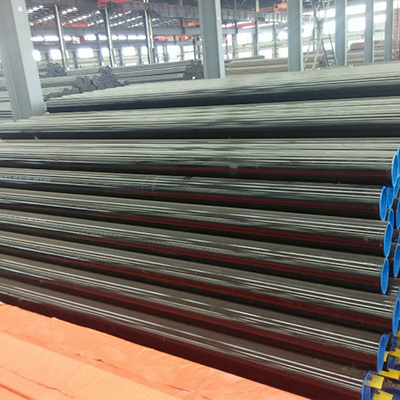Common alloying elements of steel (part one)
Carbon -- Carbon is an indispensable alloying element in steel for the formation of cementite (and other carbides), pearlite, spheroidite, bainite and Fe-C martensite. A microstructure composed of one or more of the above components provides a wide range of mechanical and processing properties. The relative content of these elements and their distribution can be controlled by heat treatment, and the microstructure of the specific steel workpiece and its properties can be changed. Most of the steel metallurgy technology is applied to the different structures and transformations of Fe-C alloys. It can be said that many other elements only play a role in the system.
The strength and hardness of steel increase while its toughness, plasticity, processability, weldability decrease with increasing carbon content. As the carbon content of the steel reaches a maximum w(C) of about 0.6%, the hardness of the Fe-C martensite also increases as the carbon content increases.
The carbon content required for the finished product forgings determines the type of steel that is obtained from the refining. The increase in the carbon content of the rimmed steel will degrade its surface quality. The surface quality of the fully killed steel with 0.15% to 0.30% w(C) is relatively poor, and it requires a special process to achieve a surface quality similar to that of steels with higher or lower carbon content. Carbon has a moderate segregation tendency, and segregation of carbon tends to be more pronounced than those of other elements.
Manganese -- Usually, steels supplied in the market contain manganese. It is important in steel smelting because it is used to decarburize molten steel and suitable for thermal deformation processing of steel to reduce its sensitivity to hot brittleness. Manganese can also form with sulfur, which can improve the cutting performance of steel. It contributes to an increase in strength and hardness, but to a lesser extent than carbon, and the amount of increase depends on the carbon content. Manganese has less effect on producing macrosegregation than any of the commonly used elements. Steels with w(Mn) exceeding 0.60% are difficult to boil. And manganese is also beneficial for improving the surface quality of all various carbon-containing steels (except for particularly low-carbon rimmed steel).
Silicon -- It is one of the main deoxidizers for steel making. Its content in steel is not necessarily stated in the specification of the chemical composition, but depends on the deoxidation process specified by the product. Rimmed steel and capped steel contain minimal silicon content typically below 0.05%. If other deoxidizers are included, the silicon content in the steel can be reduced. Silicon has little chance of segregation and it is generally detrimental to surface quality of low carbon steel and this is more pronounced for those with vulcanizing agent. Silicon can slightly increase the strength of some ferrites, but does not cause a significant drop in plasticity. Higher silicon content increases the oxidation resistance of steel in air (temperatures up to 260 ° C or 500 °F) and reduces hysteresis losses. Such high silicon steel forgings are generally difficult to handle.

The strength and hardness of steel increase while its toughness, plasticity, processability, weldability decrease with increasing carbon content. As the carbon content of the steel reaches a maximum w(C) of about 0.6%, the hardness of the Fe-C martensite also increases as the carbon content increases.
The carbon content required for the finished product forgings determines the type of steel that is obtained from the refining. The increase in the carbon content of the rimmed steel will degrade its surface quality. The surface quality of the fully killed steel with 0.15% to 0.30% w(C) is relatively poor, and it requires a special process to achieve a surface quality similar to that of steels with higher or lower carbon content. Carbon has a moderate segregation tendency, and segregation of carbon tends to be more pronounced than those of other elements.
Manganese -- Usually, steels supplied in the market contain manganese. It is important in steel smelting because it is used to decarburize molten steel and suitable for thermal deformation processing of steel to reduce its sensitivity to hot brittleness. Manganese can also form with sulfur, which can improve the cutting performance of steel. It contributes to an increase in strength and hardness, but to a lesser extent than carbon, and the amount of increase depends on the carbon content. Manganese has less effect on producing macrosegregation than any of the commonly used elements. Steels with w(Mn) exceeding 0.60% are difficult to boil. And manganese is also beneficial for improving the surface quality of all various carbon-containing steels (except for particularly low-carbon rimmed steel).
Silicon -- It is one of the main deoxidizers for steel making. Its content in steel is not necessarily stated in the specification of the chemical composition, but depends on the deoxidation process specified by the product. Rimmed steel and capped steel contain minimal silicon content typically below 0.05%. If other deoxidizers are included, the silicon content in the steel can be reduced. Silicon has little chance of segregation and it is generally detrimental to surface quality of low carbon steel and this is more pronounced for those with vulcanizing agent. Silicon can slightly increase the strength of some ferrites, but does not cause a significant drop in plasticity. Higher silicon content increases the oxidation resistance of steel in air (temperatures up to 260 ° C or 500 °F) and reduces hysteresis losses. Such high silicon steel forgings are generally difficult to handle.


